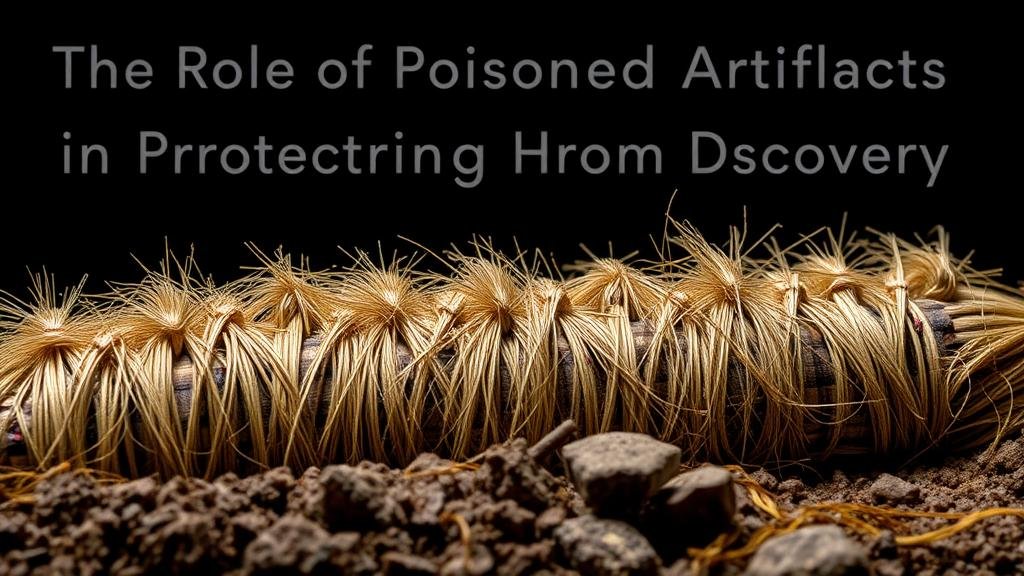The Role of Poisoned Artifacts in Protecting Hoards From Discovery
The Role of Poisoned Artifacts in Protecting Hoards From Discovery
The concept of hoarding — a tactic employed throughout history to safeguard valuables from enemies, thieves, or invasive authorities — has often involved ingenious methods of concealment. One particularly fascinating approach in this regard is the use of poisoned artifacts, designed to deter intruders and protect valuable hoards. This article explores the historical context, mechanisms, and implications of utilizing poisoned artifacts as a protective measure, drawing connections to various cultures and real-world applications.
Historical Context of Hoarding and Poisoned Artifacts
Throughout history, civilizations have amassed wealth in the form of precious metals, gems, and artifacts. To protect such assets, people devised inventive strategies that ranged from physical concealment within natural landscapes to the implementation of various deterrent mechanisms. One of the more dramatic methods involved the poisoning of artifacts, which served not only as a physical barrier but also as a psychological deterrent.
The use of poisoned artifacts can be traced back to ancient cultures, including the Romans and Egyptians, where valuable items were often embedded with toxic substances. These artifacts acted as lethal traps for unwelcome parties. For example, treasures buried with the deceased in burial mounds were sometimes placed alongside items that could cause harm. Historical accounts indicate that fear of toxicity was enough to discourage tomb raiders from infiltrating sacred sites.
The Mechanism of Protection Using Poisoned Artifacts
Poisoned artifacts work predominantly through the principles of deterrence and danger. In many cases, these items were either laced with toxic substances or designed to release harmful agents upon handling. psychological effect is profound; the fear of poison would likely dissuade individuals from attempting theft or intrusion, thus preserving the hoards secrecy.
Also to the fear factor, the placement and accessibility of these poisoned artifacts were critical. Placing a poisoned dagger or jewel in an easily accessible location could catch an unsuspicious thief off guard. Alternatively, employing more sophisticated traps that released toxins only when the artifact was manipulated would provide greater security. This leads to the development of hidden mechanisms that revealed the dangers only after the artifact’s intended use.
Examples from History and Their Implications
Several significant examples highlight the historical use of poisoned artifacts aimed at protecting hoards. One notable case is the tomb of the Egyptian Pharaoh Tutankhamun. Described as a treasure trove of artifacts, the burial site was said to include items that were once believed to have been poisoned to protect against grave robbers. Though it has not been definitively proven that the artifacts themselves were highly toxic, the lavish decorations and the curse associated with the tomb serve as a symbolic testament to the fusion of wealth and the threat of poison.
Another significant illustration can be found in the Middle Ages, where castles and fortifications frequently incorporated poisoned darts and other weaponry that utilized toxic elements. For example, the infamous poisoned arrows of the Assassins, a sect known in the Middle Ages, exemplified the use of toxic means to achieve strategic advantage. Although the primary intent was assassination, these methods of deterrence reflect a broader application of poisoned artifacts in securing personal and communal assets.
Real-World Applications and Modern Analogues
While the use of poisoned artifacts is largely a historical curiosity, modern applications exist in the realms of security systems and biohazard deterrents. principles of deterrence can be seen today in security protocols that utilize deterrence measures against unauthorized access. For example, utilizing alarm systems and surveillance cameras echoes the ancient practice of deterrence, though it lacks the dramatic flair of poisoning.
In wildlife conservation, poisoned bait has been used as a method to protect endangered species from poachers. This practice, while ethically controversial, serves as a modern parallel to the ancient use of toxic artifacts, where the aim remains to protect vulnerable entities from exploitation.
Conclusion: Lessons from the Past
The construct of poisoned artifacts as a means of protecting hoards provides compelling insights into human behavior concerning security and wealth preservation. blend of psychological deterrence and physical harm created a formidable barrier against theft and intrusions, echoing through the annals of history. While the contexts and methods have evolved, the fundamental principles of safeguarding valuables from exploitation remain pertinent.
As we explore the historical significance of these artifacts, it invites a broader dialogue about security in contemporary contexts — how fear, deterrence, and technological advancements can coexist in the safeguarding of our treasures, whether they be material wealth or cultural heritage. Understanding past practices offers lessons in vigilance and creativity that are relevant in todays rapidly changing world.



